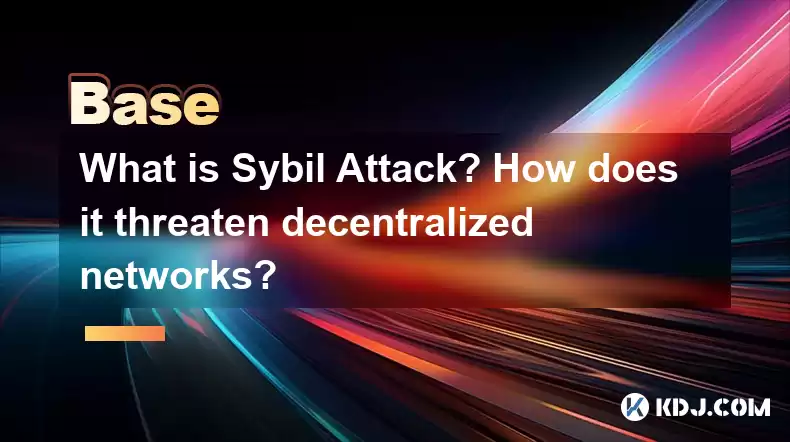-
 Bitcoin
Bitcoin $115100
1.27% -
 Ethereum
Ethereum $3675
2.71% -
 XRP
XRP $2.995
1.45% -
 Tether USDt
Tether USDt $1.000
0.02% -
 BNB
BNB $769.8
2.64% -
 Solana
Solana $168.0
3.25% -
 USDC
USDC $0.9999
-0.01% -
 TRON
TRON $0.3371
1.48% -
 Dogecoin
Dogecoin $0.2051
3.36% -
 Cardano
Cardano $0.7394
2.30% -
 Hyperliquid
Hyperliquid $38.15
0.42% -
 Stellar
Stellar $0.3966
-0.36% -
 Sui
Sui $3.486
2.93% -
 Chainlink
Chainlink $16.72
2.52% -
 Bitcoin Cash
Bitcoin Cash $568.0
4.36% -
 Hedera
Hedera $0.2440
2.59% -
 Ethena USDe
Ethena USDe $1.001
0.04% -
 Avalanche
Avalanche $22.16
2.06% -
 Litecoin
Litecoin $119.1
-0.73% -
 UNUS SED LEO
UNUS SED LEO $8.991
0.04% -
 Toncoin
Toncoin $3.232
-0.39% -
 Shiba Inu
Shiba Inu $0.00001233
2.82% -
 Uniswap
Uniswap $9.717
2.53% -
 Polkadot
Polkadot $3.664
1.85% -
 Dai
Dai $1.000
0.01% -
 Monero
Monero $281.2
-3.89% -
 Bitget Token
Bitget Token $4.350
1.55% -
 Cronos
Cronos $0.1428
5.07% -
 Pepe
Pepe $0.00001050
3.68% -
 Aave
Aave $262.3
3.54%
What is Sybil Attack? How does it threaten decentralized networks?
Sybil attacks exploit decentralized systems by using numerous fake identities to manipulate consensus mechanisms, impacting voting, governance, and dApp integrity; mitigation requires robust identity verification, reputation systems, and advanced consensus algorithms.
Mar 06, 2025 at 03:42 am

Key Points:
- Sybil attacks exploit vulnerabilities in decentralized systems by creating numerous fake identities to gain undue influence.
- These attacks undermine the consensus mechanisms crucial for the security and integrity of cryptocurrencies and blockchain networks.
- Mitigation strategies involve robust identity verification, reputation systems, and advanced consensus algorithms.
- The severity of a Sybil attack depends on the scale of fake identities created and the network's defenses.
What is a Sybil Attack?
A Sybil attack is a type of attack on decentralized systems where a single entity controls multiple identities or accounts, giving the attacker disproportionate influence over the network. Imagine one person controlling hundreds of fake Twitter accounts to artificially inflate their popularity – that’s essentially a Sybil attack. In the cryptocurrency context, this translates to a single actor manipulating voting processes, consensus mechanisms, or other aspects of the network. The attacker can then use these fabricated identities to manipulate the system for their benefit, potentially causing significant harm.
How Sybil Attacks Threaten Decentralized Networks
The core threat of a Sybil attack lies in its ability to undermine the fundamental principles of decentralization. Decentralized networks rely on the assumption that each participant holds equal weight and influence. A Sybil attack violates this assumption, granting an attacker an unfair advantage. This can manifest in several ways, depending on the specific system and the attacker's goals.
Impact on Consensus Mechanisms
Many cryptocurrencies utilize consensus mechanisms like Proof-of-Stake (PoS) or Proof-of-Work (PoW) to validate transactions and maintain the integrity of the blockchain. A Sybil attack can severely disrupt these mechanisms. For instance, in a PoS system, an attacker with numerous fake identities could amass a significant stake, allowing them to control the network's validation process and potentially censor transactions or even rewrite the blockchain's history. Similarly, in a PoW system, a large number of compromised nodes could potentially influence the mining process.
Impact on Governance and Voting
Decentralized networks often employ on-chain governance systems, allowing token holders to vote on proposals and changes to the protocol. A Sybil attack could easily manipulate these voting processes. By creating a multitude of fake identities and voting with them, an attacker could sway the outcome of critical votes, potentially forcing the adoption of malicious changes or blocking beneficial updates.
Impact on Decentralized Applications (dApps)
Decentralized applications (dApps) built on top of blockchain networks are also vulnerable to Sybil attacks. For instance, in a dApp relying on user reputation or voting systems, a Sybil attacker could artificially inflate their reputation or influence the outcome of votes, gaining unfair advantages within the dApp ecosystem. This can compromise the fairness and integrity of the dApp.
Mitigating Sybil Attacks
Several techniques can be employed to mitigate the risk of Sybil attacks. No single solution guarantees complete protection, but a layered approach combining different methods is generally most effective.
Identity Verification and Reputation Systems
One approach is to implement robust identity verification systems. This might involve requiring users to provide verifiable personal information or linking their accounts to existing, trusted identity platforms. Reputation systems can also play a crucial role. These systems track the behavior of users over time, rewarding trustworthy behavior and penalizing malicious activity. Users with higher reputations would have a stronger influence on the network, making it more difficult for Sybil accounts to gain traction.
Advanced Consensus Algorithms
Developing more sophisticated consensus algorithms is another crucial aspect of Sybil attack mitigation. Some algorithms are inherently more resistant to Sybil attacks than others. For example, some systems employ Byzantine Fault Tolerance (BFT) algorithms that can withstand a certain percentage of malicious nodes without compromising the network's integrity.
Sybil-Resistant Proof-of-Stake
Variations of Proof-of-Stake (PoS) mechanisms have been developed specifically to address Sybil attacks. These variations often incorporate additional security measures, such as requiring significant collateral or utilizing complex cryptographic techniques to make it harder to create and control multiple fake identities.
Challenges in Sybil Attack Mitigation
Despite various mitigation techniques, completely eliminating the threat of Sybil attacks remains a challenge. The cat-and-mouse game between attackers and defenders continues to evolve, with attackers constantly finding new ways to circumvent security measures.
Common Questions and Answers:
Q: Can Sybil attacks be completely prevented? A: No, completely preventing Sybil attacks is practically impossible. The focus is on making them sufficiently costly and difficult to execute that they become unprofitable for attackers.
Q: What are the consequences of a successful Sybil attack? A: Successful Sybil attacks can lead to various negative outcomes, including manipulation of governance decisions, disruption of consensus mechanisms, and compromised security of the entire network.
Q: How are Sybil attacks different from other types of attacks on cryptocurrencies? A: Unlike attacks targeting specific vulnerabilities in code, Sybil attacks exploit the inherent challenges of verifying identities in a decentralized environment. They focus on gaining control through sheer numerical dominance rather than technical exploits.
Q: Are all decentralized systems equally vulnerable to Sybil attacks? A: No, the vulnerability to Sybil attacks varies depending on the specific design and implementation of the decentralized system, including its consensus mechanism and identity verification processes. Some systems are inherently more resilient than others.
Q: What role does blockchain technology play in mitigating Sybil attacks? A: Blockchain technology itself doesn't inherently prevent Sybil attacks, but it provides a transparent and immutable record of transactions and interactions, which can be used to detect and potentially mitigate the effects of such attacks. However, additional mechanisms are still needed to verify identities and ensure the integrity of the system.
Disclaimer:info@kdj.com
The information provided is not trading advice. kdj.com does not assume any responsibility for any investments made based on the information provided in this article. Cryptocurrencies are highly volatile and it is highly recommended that you invest with caution after thorough research!
If you believe that the content used on this website infringes your copyright, please contact us immediately (info@kdj.com) and we will delete it promptly.
- Fireverse Token: Igniting a Musical Revolution in Web3
- 2025-08-07 08:27:45
- Ethereum, L2 Withdrawals, and Decentralization: A New Yorker's Take
- 2025-08-07 08:32:33
- Avalanche vs. Ruvi AI: Daily Sales Tell a Story of Crypto Disruption
- 2025-08-07 06:29:35
- DeSoc: The Crypto to Buy Now for a Decentralized Future (and Maybe 43x Gains!)
- 2025-08-07 06:50:16
- Arctic Pablo Coin: Riding the Meme Coin Wave with a Deflationary Twist
- 2025-08-07 07:18:13
- XRP Price Skyrocket? Decoding the Cryptocurrency's Next Move
- 2025-08-07 07:31:50
Related knowledge

What is the difference between CeFi and DeFi?
Jul 22,2025 at 12:28am
Understanding CeFi and DeFiIn the world of cryptocurrency, CeFi (Centralized Finance) and DeFi (Decentralized Finance) represent two distinct financia...

How to qualify for potential crypto airdrops?
Jul 23,2025 at 06:49am
Understanding What Crypto Airdrops AreCrypto airdrops refer to the distribution of free tokens or coins to a large number of wallet addresses, often u...

What is a crypto "airdrop farmer"?
Jul 24,2025 at 10:22pm
Understanding the Role of a Crypto 'Airdrop Farmer'A crypto 'airdrop farmer' refers to an individual who actively participates in cryptocurrency airdr...

What is the difference between a sidechain and a Layer 2?
Jul 20,2025 at 11:35pm
Understanding the Concept of SidechainsA sidechain is a separate blockchain that runs parallel to the main blockchain, typically the mainnet of a cryp...

What is the Inter-Blockchain Communication Protocol (IBC)?
Jul 19,2025 at 10:43am
Understanding the Inter-Blockchain Communication Protocol (IBC)The Inter-Blockchain Communication Protocol (IBC) is a cross-chain communication protoc...

How does sharding improve scalability?
Jul 20,2025 at 01:21am
Understanding Sharding in BlockchainSharding is a database partitioning technique that is increasingly being adopted in blockchain technology to enhan...

What is the difference between CeFi and DeFi?
Jul 22,2025 at 12:28am
Understanding CeFi and DeFiIn the world of cryptocurrency, CeFi (Centralized Finance) and DeFi (Decentralized Finance) represent two distinct financia...

How to qualify for potential crypto airdrops?
Jul 23,2025 at 06:49am
Understanding What Crypto Airdrops AreCrypto airdrops refer to the distribution of free tokens or coins to a large number of wallet addresses, often u...

What is a crypto "airdrop farmer"?
Jul 24,2025 at 10:22pm
Understanding the Role of a Crypto 'Airdrop Farmer'A crypto 'airdrop farmer' refers to an individual who actively participates in cryptocurrency airdr...

What is the difference between a sidechain and a Layer 2?
Jul 20,2025 at 11:35pm
Understanding the Concept of SidechainsA sidechain is a separate blockchain that runs parallel to the main blockchain, typically the mainnet of a cryp...

What is the Inter-Blockchain Communication Protocol (IBC)?
Jul 19,2025 at 10:43am
Understanding the Inter-Blockchain Communication Protocol (IBC)The Inter-Blockchain Communication Protocol (IBC) is a cross-chain communication protoc...

How does sharding improve scalability?
Jul 20,2025 at 01:21am
Understanding Sharding in BlockchainSharding is a database partitioning technique that is increasingly being adopted in blockchain technology to enhan...
See all articles

























































































